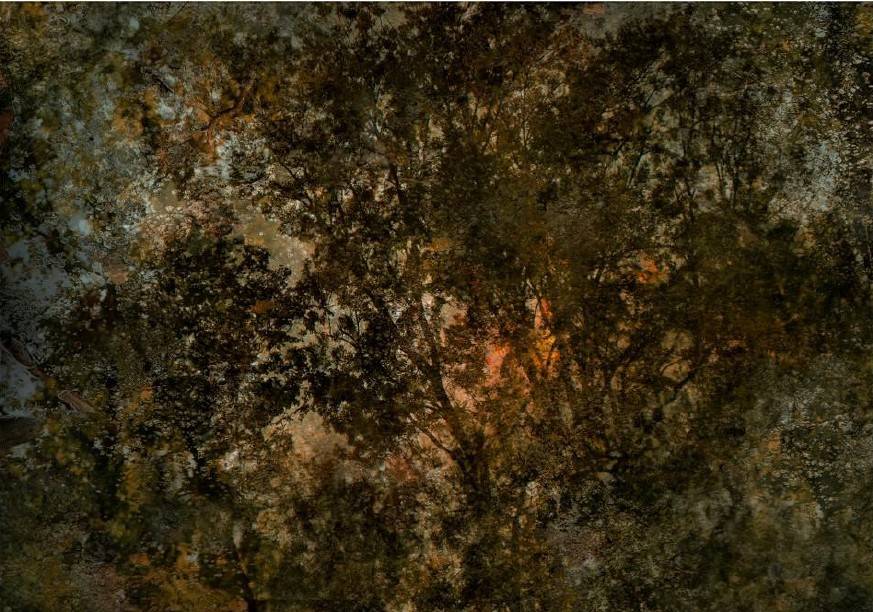
François Sargologo
Sargologo’s photographic scenes, characterized by the omnipresence of exuberant nature, bear the same name as the exhibition. These panoramas, akin to a state of “waking dreaming”, reflect a body of work inspired by the realm of oneirism and romantic parody. However, Romanticism is neither Realism nor Naturalism; it undoubtedly acts to distance itself from reason and objectivity, at the risk of falling into the Platonic simulacrum, a mere imitation of what it claims to represent.1 In The Logic of Sense, Gilles Deleuze had already proposed rehabilitating the simulacrum by attributing to it an intrinsic value independent of what it falsely represents. In Simulacra and Simulation, Jean Baudril- lard takes the idea even further; for him, the simulacrum is no longer about parody or falsification but about “substituting the signs of the real with the real itself.”2
Sargologo’s photographic scenes are no longer intended to paint an accurate portrait of nature, which becomes no more than a pretext for something else. Sargologo thus goes beyond Romanticism, surpassing it and pushing it to the limit, to the point of becoming a caricature of himself.
This body of work evokes nature at its apotheosis, heralding something yet to come. It calls upon the sublime in the sense that Edmund Burke described in A Philosophical Inquiry into the Origin of Our Ideas of the Sublime and Beautiful, a delightful horror, i.e., a feeling that transcends beauty, invoking both awe and terror, summoning up dread and trap- ping the viewer between wonder and anguish.3
1 The simulacrum in Plato’s view is thus a deceptive appearance based on an optical illusion. The Stranger introduces this distinction to define the sophist as an illusionist—that is, a producer of simulacra, a fabricator of fictions.
2 According to Baudrillard, when it comes to postmodern simulation and simulacra: “It is no longer a question of imitation, nor duplication, nor even parody. It is about substituting the signs of the real for the real itself” (“The Precession of Simulacra,” 2).
3 According to Burke, the Beautiful is what is well-formed and aesthetically pleasing, while the Sublime is what has the power to overwhelm and destroy us.